If you walk, run, kick, jog, jump, change directions or, quite frankly, move at all, lunges should be included in your exercise program. This gold-standard, lower-body movement maps directly to locomotion (walking and running) movement patterns while developing strength and mobility in your quads, hamstrings, glutes, back, core and stabilizer muscles. Lunging also helps develop balance, coordination and unilateral (single-side) strength, lending to its title as one of the most functional exercises around.
There are hundreds (possibly thousands) of ways to progress, change, modify and load lunges, but also almost as many potential common faults. It’s essential to start simple and focus on the basics before loading and exploding this versatile exercise.
LUNGE CHECKLIST
These points are a must for every lunge, no matter the direction or type. If it’s too much to think about all of them at once, master each one individually, and then put them all together.
☑ Maintain a tall, upright posture throughout the movement.
☑ Brace your core throughout the movement.
☑ Lower your body down and up like an elevator.
☑ Bend both knees to 90 degrees.
☑ “Scissor” your feet together as you stand to stabilize your hips.
☑ Your front knee should track over your middle toes.
☑ Maintain mobility (movement) at your hips, knees and ankles.
ALIGN IT
The trickiest part of a proper lunge is starting in the correct position and maintaining that same alignment throughout the move. To establish the correct lunge, try a split squat — otherwise known as a stationary lunge — from the ground up.
THE DRILL: SPLIT SQUAT
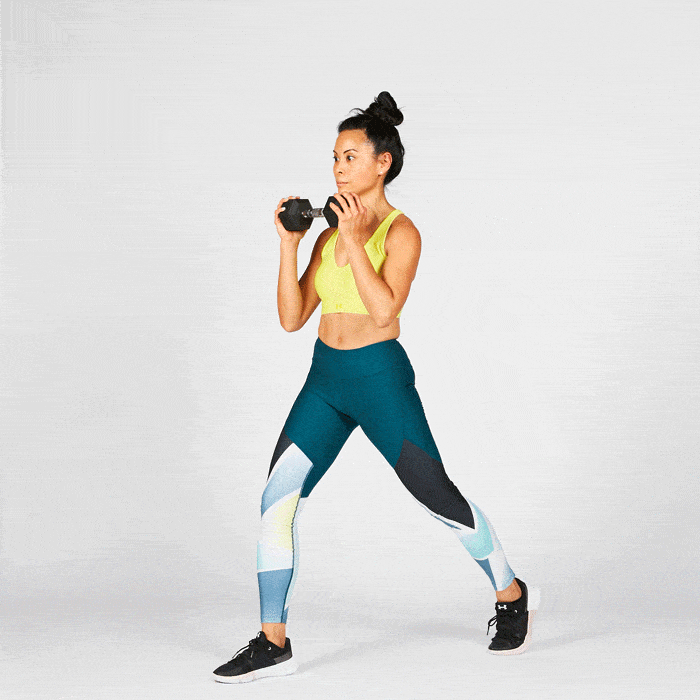
Begin in a half-kneeling position on a mat or padded floor. Both knees should be bent to 90 degrees and legs are shoulder-width apart. While maintaining a tall posture, press into both feet, squeeze your glutes, and straighten both your legs. Continue to repeat this movement from the floor until you can come to a stand without hinging at your hips or letting the front knee buckle in.
(Note: The demonstration above shows a weighted split squat, but beginners should perform this move without a weight.)
UNLOAD IT
Now that the proper foot placement and movement pattern has been established, the lunge can be fine-tuned by unloading the weight on your joints using a TRX suspension trainer.
THE DRILL: TRX STEP-BACK LUNGE
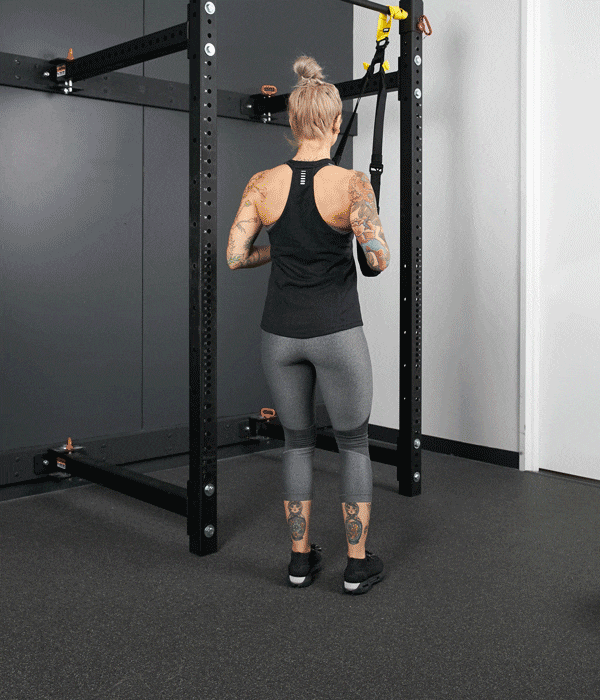
With the suspension trainer at mid-length, stand facing the anchor point. Hold onto the handles with your hands in front of your body and elbows soft, and balance on your right foot. Step your left leg back and lower your body down like an elevator, checking for the same 90-degree knee bend in both knees that was established in the previous split squats. Without leaning back, use the handles to unload your body weight and help pull yourself back to the starting position. As you repeat the movement by switching legs, ensure your front knee continues to track over your middle toes. Keep your chest upright and do not hinge at your hips.
TRAVEL WITH IT
Once the mechanics of the lunge have been mastered, it’s safe to progress to a more functional movement that maps toward walking and running.
THE DRILL: WALKING LUNGES

Stand with your feet about shoulder-width apart; you can put your hands on your hips or leave them down at your sides. Step your right foot forward, landing in the same lunge position from the previous two exercises. Lower your left knee down until it’s just above the ground. Press through both feet to straighten both legs. Stand up straight and strong, then step the left foot forward, repeating on the other side. Avoid “walking on a balance beam;” you can place your feet in a staggered line in a similar fashion to how you would walk. Remember to lower your body straight up and down like an elevator.
CLICK TO TWEET THIS ARTICLE > New to lunges? You’re in the right place to master this functional move with tips from @myfitnesspal. #myfitnesspal
CHANGE IT
Lunges aren’t just for moving forward. The same mechanics that were mastered in the previous drills can be applied to lunges in all different directions.
THE DRILLS: ALTERNATING LATERAL LUNGE & CURTSY LUNGE
ALTERNATING LATERAL LUNGE

Stand upright with your feet together. Step wider than hip-width apart with your right leg, keeping the toes of your right foot pointed forward as you land. Immediately upon coming into contact with the floor, bend at the knee and sink your right hip down and back; think “elevator, not escalator” like the previous lunge drills. Press through your right foot to return to the starting position, and repeat on the left side.
(Note: The demonstration above shows a weighted lateral lunge, but beginners should perform this move without a weight.)
CURTSY LUNGE
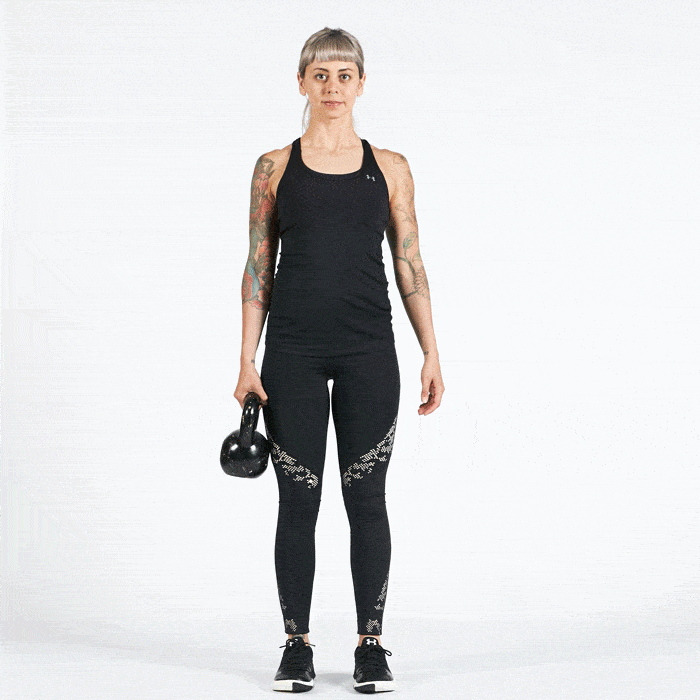
Begin by standing with your feet shoulder-width apart and arms hanging by your sides. Step your right leg behind and outside the left leg. Bend both knees, remembering to once again lower straight down with an upright posture and keep your right knee aligned with the middle right toes. When your right thigh is almost parallel with the floor, press through both feet to return to the starting position. Repeat on the left side.
(Note: The demonstration above shows a weighted curtsy lunge, but beginners should perform this move without a weight.)
LOAD IT
The final step on our lunge-learning journey is to add some external resistance. This step is not necessary unless you’re fully comfortable with the bodyweight lunge and have achieved perfect movement patterns. Select a weight that is challenging, yet allows you to maintain proper form (including bending your knees to 90 degrees, keeping your front knee aligned with your middle toes and keeping the body upright without hinging at the hips).
THE DRILLS: WEIGHTED SPLIT SQUATS & BARBELL REVERSE LUNGES
WEIGHTED SPLIT SQUATS
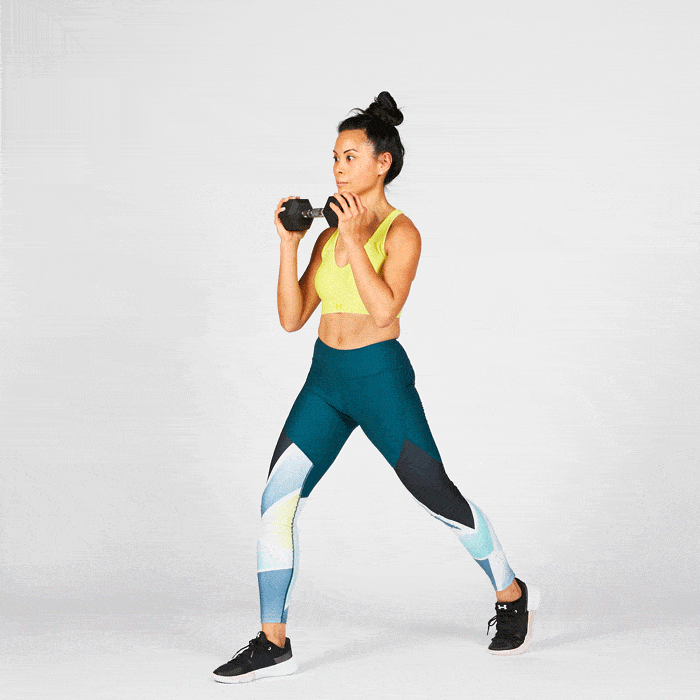
The positioning will be identical to the split squats from the ground up version seen earlier, but you will now hold a weight either in front of your chin or in both hands hanging down by your sides. With your legs in the split stance that was established earlier, bend both knees to 90 degrees, engage your glutes and core, then straighten both legs to return to a stand.
BARBELL REVERSE LUNGES
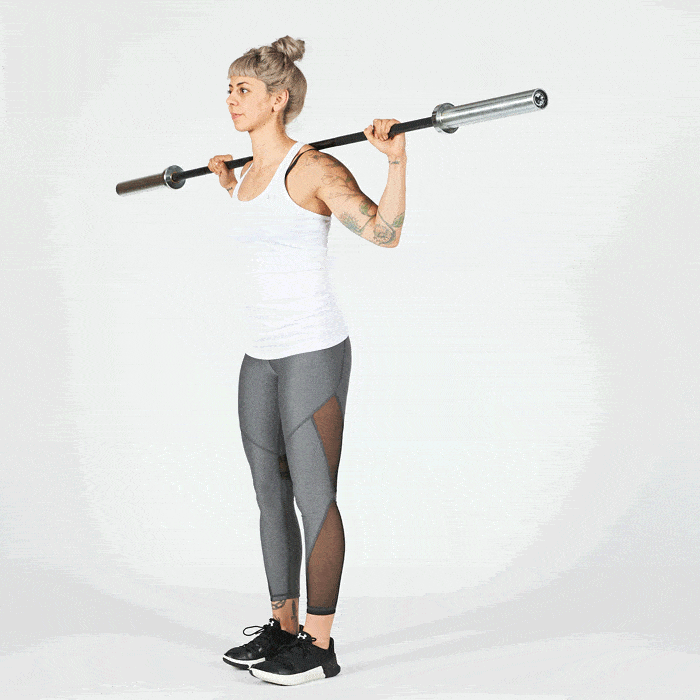
With a barbell on the meaty part of your upper shoulders, begin with your feet about shoulder-width apart. Step your left leg back into the proper lunge stance. Lower down to a 90-degree position with both knees, drive through the right foot and come back to a stand.
For more fitness inspiration, check out “Workout Routines” in the app to discover and log a wide variety of routines by performance specialists. Or build your own routine with exercises that fit your goals.




